
Five years ago, Mark Goldstein and three partners recognized that loyalty programs were becoming a cottage industry.
Coming up with the right way to manage those programs, he believed, would be a neat trick. So would finding an effective way to lure in customers.
“The toughest part of the business is the selling,” Goldstein, founder of San Francisco-based Loyalty Lab, told CRM Buyer. “Nobody wanted to go first.”
Loyalty Lab was founded five years ago. However, about two years ago, after lots of trial and error, the company “sort of got over the hump,” as Goldstein put it, and “reached the scale that would make it work.” That’s when it hit the milestone of 100 million program members served.
“When that happened, we started feeling pretty comfortable,” Goldstein said. The firm now claims to service 200 million loyalty program members.
Loyalty Lab had to reach out in several directions to develop software that would link into customers’ platforms and communicate in real-time. Even now, the trial-and-error process continues, Goldstein noted, but “after five years, there are certain things that start coming together. The software works.”
Early Obstacles
It wasn’t smooth sailing from the start.
“In the first two years of any business, there’s a lot of debugging and handling of the solution that you’ve just built,” observed Goldstein, “but as you reach an adolescent stage, you find it does do what you say it can do.”
The key is to have software that can adapt to the quirks of an individual client’s platform.
“The big shift for us the last few years is, we look at any challenge we might have and deploy a large multimillion-customer loyalty program — and we can execute it without thinking up a new process,” he said. “We’re very comfortable that our software works and can adapt.”
There’s no evolutionary end point. “Software is never finished,” said Goldstein.
It’s basically enhanced, he explained, and though it’s taken five years to reach the state it’s in today, the company will keep working on it, and in another five years, it will be even more adaptable.
It’s important to sell the software’s versatility to major firms with entrenched customer loyalty programs, Goldstein emphasized. “The No. 1 challenge was convincing brands that we could take on their best customers. In this business, we say we have software that can do a better job in managing your actions with your best customers. You don’t want to screw up your best customers.”
At the outset, Loyalty Lab didn’t fully deliver on all of its promises, he acknowledged, “but now we can — and we’re comfortable in making that claim.”
Goldstein and his partners have convinced a number of big clients. Among them are Bally’s Total Fitness, Sears, Disney, Equifax, 1-800-flowers.com, Spencer Gifts, the Franklin Mint and, most recently, Virgin America Airlines.
Getting a Loyalty Program to Fly
Indeed, San Francisco-based Virgin America — itself only four years old — tested Loyalty Lab’s ability to adapt its Web-based platform to a different sort of loyalty program, according to Ravi Simhambhatla, the airline’s director of architecture and integration.
“Initially, it did not match up,” Simhambhatla told CRM Buyer. “Loyalty Lab was in the retail loyalty space, and it’s hard to marry an airline’s loyalty system needs. The platform is entirely different.”
In time, Virgin America was won over, Simhambhatla said.
“They enhanced the product and made it work with our our needs,” he explained. “We basically wanted to do points, rather than the ubiquitous [frequent flyer] miles. We wanted Loyalty Lab to allow us to provide multipliers, various permutations and combinations of multipliers, for various customer needs. They have a very strong reporting platform that leads into the loyalty CRM world we’re looking to.”
The airline also wanted a match for its open source Linux operating system.
“All our business layers are [state of the art], and we were looking for a partner who could do the same,” said Simhambhatla.
Loyalty Lab provided a solution that allowed the airline’s customers to accumulate and spend points and have their accounts updated in real-time, said Simhambhatla. “They have a whole boatload of [application programming interfaces] we can use to allocate points to shoppers, remove points — burn and earn scenarios. Our Web site is entirely tied into the Loyalty Lab system.”
The system can differentiate among the airline’s various levels of shoppers, and navigates between one reward level and another, he added.
“They’ve seen the road map, and they are moving in the direction where they’re going to be signing up more and more demanding customers like ourselves, who need real-time transactions, rather than batched transactions. They’re moving in that direction, or we wouldn’t have signed up with them,” Simhambhatla concluded.
It’s just a matter of living up to promises made in business proposals, said Goldstein. “Execution — nothing more than that. It’s basically just being able to deliver what we promised and be able to back it up with the numbers.”
What that has created is a company that serviced US$10 million in bookings a year ago, he noted. Goldstein declined to disclose the privately held company’s annual earnings, but he said it has grown “by 30 to 50 percent” each year.
Loyalty Lab has 50 employees.
Analysts’ Take
Versatility and opportunism are keys to Loyalty Lab’s success.
“I think their approach — leveraging a mix of traditional loyalty, e-mail and CRM programs, as well as social networking — is an interesting mix,” Charles King, principal analyst with Pund-IT, told CRM Buyer. “It gives their clients a way to experiment with — and mix and match — combinations of offerings to find the right fit for their customers.”
The company’s ability to customize is a big advantage, King noted.
“Loyalty Lab’s focus on specific consumer verticals — retail, travel, packaged goods and subscription services — allows them to fine-tune their offerings while also developing deeper insight and expertise,” said King. “That’s a great model for building a sustainable business.”
Loyalty Lab’s partnership with Virgin America is particularly shrewd, observed Rob Enderle, principal analyst with the Enderle Group.
“The large airlines are faced with the need to reduce their costs and have been targeting customer loyalty problems as a way to do that,” Enderle told CRM Buyer. “Problem is, by so doing they are destroying customer loyalty, and that is working for airlines like JetBlue, Southwest and Virgin America.”
Virgin America’s loyalty program ranks highly among all airlines, Enderle said, and Loyalty Lab is helping to enhance that rating.
“They clearly would also like to to take better advantage of the fact the large airlines are destroying their own loyalty programs, providing a unique opportunity to capture the most lucrative frequent flier segment,” he said. “Loyalty Lab appears to be expert at this, and given these hard times, it should be increasingly in high demand as other companies come around to the idea that the cost of retaining a good customer is lower than the cost of customer acquisition.”

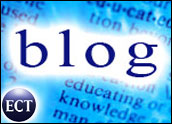

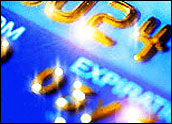

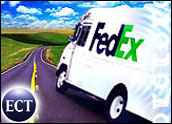
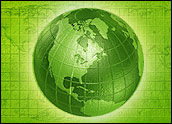
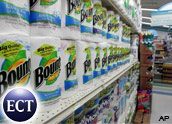


































Loyalty program points, dollars spent, and/or inter-rater rating points can all add-up.
The nice thing is that users will always pick a similarly-priced competing product that offers "points" over one that doesn’t.
Obviously, this can help keep a customer buying products and services (every month, in the SaaS model).
As points accrue, a user with a high level of points can be regarded more highly too. This becomes important when mitigating feature requests for enhancing products and services, right?